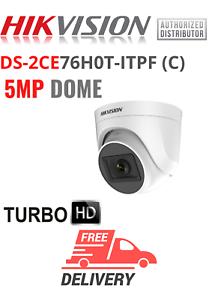CCTV systems offer viewpoint limits used in the protection of people, assets, and structures. A CCTV structure serves predominantly as a security upper hand, giving surveillance to a greater district, a more prominent measure of the time than would be reachable with safety faculty alone. CCTV structures are routinely used to help careful security systems by joining video incorporation and security alarms for hindrances, interference distinguishing proof, and access control. For example, a CCTV system can give the assets to overview an alert made by an interference distinguishing proof structure and record the event. Always hikvision shows a good level of feedback.

A CCTV structure associates a camera to a video screen using a prompt transmission system. These differentiations with broadcast TV where the sign is sent over the air and saw with a TV. New approaches inside the CCTV business are moving towards more open designing and transmission methods versus the shut circuit, for all time set up affiliation structures of the past. CCTV systems have a colossal number with a grouping of limits, components, and subtleties. Key parts consolidate cameras, central focuses, data transport, power, and lighting, among others. CCTV propels steadily go through feature refinements to additionally foster execution in locales like progressed equipment decisions, data storing, part downsizing, remote trades, and automated picture assessment. The parts, plan decisions, and components available in the present CCTV market settle on a mind-boggling course of action of purchasing decisions.
Characterizing System Requirements
For an association to appropriately carry out a CCTV framework, site-explicit qualities should be surveyed by a proficient multidisciplinary group of staff. This group is basic to recognizing key utilitarian and functional necessities. Practical prerequisites comprise of deciding the area of observation, for example, an edge region or a passage.
Functional necessities characterize what data a CCTV framework will be relied upon to give given the current working conditions.
Needs Assessment
A careful danger and requirements evaluation ought to be directed to distinguish areas or resources that will profit from CCTV observation as a component of a general security approach. Associations can improve the security of offices and basic foundation most adequately by characterizing their, generally speaking, objectives and targets for CCTV frameworks as far as the necessities inside their functional climate. A necessities evaluation accumulates and investigates four arrangements of prerequisites: useful, functional, foundation, and video maintenance.
- Useful necessities Define camera inclusion needs, for example, reconnaissance of edges, parking areas, and capacity regions; reconnaissance of ways to deal with, and spaces inside, structures or different constructions; and observation of waterfronts;
- Functional prerequisites Define the capacities of the CCTV framework parts that will empower it to give the normal data under every single working condition. Conditions to consider in the functional conditions incorporate constant tasks, lighting, climate conditions, and temperature changes. It is critical that functional necessities are point by point and testable. For instance, waterfront observation might request that the CCTV framework give a conspicuous picture, during day or night, of a surface watercraft working at speeds somewhere in the range of 0 and 60 ties in wave statures of up to 6 feet while inside 500 yards of a wharf;
- Foundation prerequisites Define needs for introducing or getting to fiber or hard-wire links, remote organizations, and power sources, to give some examples, important to effectively carry out an incorporated CCTV framework; and
- Video maintenance necessities Define the association’s video maintenance and capacity needs.
